- Chabot Carnation: Planting and Care Guide
- Planting Chabot Carnation
- Watering and Care
- Pests and Diseases
- Harvesting
- Table of Planting and Care
- How to Choose the Right Seeds for Chabot Carnation
- 1. Seed Source
- 2. Variety
- 3. Growing Conditions
- 4. Germination Rate
- 5. Disease Resistance
- 6. Seed Packaging
- 7. Reviews and Recommendations
- The Optimal Conditions for Growing Chabot Carnation
- Sunlight
- Temperature
- Soil
- Watering
- Fertilization
- Pruning
- Pest and Disease Control
- Step-by-Step Guide to Planting Chabot Carnation Seeds
- 1. Selecting the Right Time
- 2. Choosing the Right Location
- 3. Preparing the Soil
- 4. Sowing the Seeds
- 5. Watering
- 6. Germination
- 7. Transplanting
- 8. Caring for the Plants
- 9. Fertilizing
- 10. Pruning and Deadheading
- 11. Overwintering
- Watering and Fertilizing Chabot Carnation Plants
- Watering
- Fertilizing
- Common Pests and Diseases of Chabot Carnation
- Pests
- Diseases
- Pruning and Deadheading Chabot Carnation
- Deadheading
- Pruning
- Conclusion
- Tips for Extending the Blooming Season of Chabot Carnation
- 1. Provide Adequate Sunshine
- 2. Water Regularly
- 3. Deadhead Spent Flowers
- 4. Fertilize Regularly
- 5. Prune and Divide
- 6. Keep an Eye on Pests and Diseases
- 7. Consider Growing in Containers
- 8. Provide Winter Protection
- Harvesting and Preserving Chabot Carnation Flowers
- Harvesting the flowers:
- Preserving the flowers:
- Water vase method:
- Drying method:
- Questions and Answers:
- How long does it take for Chabot Carnation seeds to germinate?
- What is the ideal time to plant Chabot Carnation seeds?
- Can Chabot Carnations be grown in containers?
- What kind of soil do Chabot Carnations prefer?
- Do Chabot Carnations require a lot of sunlight?
- How often should I water Chabot Carnations?
- Videos: Cut flower production: Chrysanthemums
Carnations are beautiful and versatile flowers that are often associated with love and admiration. One popular variety is the Chabot Carnation, which is known for its vibrant colors and strong fragrance. If you’re interested in growing your own Chabot Carnations from seed, this comprehensive guide will provide you with all the information you need to get started.
When starting from seed, it’s important to choose high-quality seeds from a reputable supplier. Chabot Carnation seeds can be sown indoors or directly in the garden, depending on your preference. If you choose to start indoors, fill a seed tray with a well-draining seed-starting mix and gently press the seeds into the soil. Keep the soil moist but not waterlogged, and place the tray in a warm area with indirect sunlight.
Once the seeds germinate, which usually takes around 2-3 weeks, you can transplant them to individual pots or outdoor beds. Choose a site that receives at least 6 hours of sunlight per day, with well-draining soil. Chabot Carnations prefer slightly alkaline soil with a pH level between 6.0 and 7.5. Before planting, amend the soil with organic matter to improve drainage and fertility.
Regular watering is important for Chabot Carnations, especially during dry spells. Water thoroughly but avoid overwatering, as this can lead to root rot. To promote strong growth and prolific blooming, it’s also recommended to feed your Chabot Carnations with a balanced fertilizer every 4-6 weeks during the growing season. Deadheading spent flowers will encourage continuous blooming and prevent the plant from expending energy on seed production.
In conclusion, growing Chabot Carnations from seed can be a rewarding experience that allows you to enjoy the beauty and fragrance of these lovely flowers. Following this guide will ensure that your Chabot Carnations thrive and provide you with stunning blooms for years to come.
Chabot Carnation: Planting and Care Guide
Planting Chabot Carnation
To successfully plant Chabot Carnation, follow these steps:
- Choose a location with well-draining soil and partial to full sun exposure.
- Prepare the soil by loosening it and removing any weeds or debris.
- Sow the Chabot Carnation seeds directly into the soil, about 1/4 inch deep.
- Space the seeds about 12 inches apart to allow for proper growth.
- Lightly cover the seeds with soil and water thoroughly.
Watering and Care
Proper watering and care is essential for healthy Chabot Carnation plants. Here are some tips:
- Water the plants regularly to keep the soil evenly moist, but avoid overwatering.
- Apply a layer of mulch around the plants to help retain moisture and suppress weeds.
- Fertilize the plants every 4-6 weeks with a balanced, slow-release fertilizer.
- Pinch back the growing tips of the plants to encourage bushier growth and more blooms.
- Remove any dead or faded flowers to promote continuous blooming.
Pests and Diseases
Chabot Carnations are generally resistant to most pests and diseases. However, they may sometimes be affected by aphids or powdery mildew. Here’s how to deal with these issues:
- If you notice aphids on your plants, spray them with a mixture of water and a mild dish soap to control the infestation.
- To prevent powdery mildew, ensure good air circulation around the plants and avoid overhead watering.
- If powdery mildew does occur, you can treat it with a fungicide specifically labeled for this disease.
Harvesting
Chabot Carnations can be harvested once the flowers are fully open and the color is vibrant. Cut the stems at a 45-degree angle just above a set of leaves to encourage new growth and more blooms.
Table of Planting and Care
| Planting | Care |
|---|---|
| Choose a location with well-draining soil and partial to full sun exposure. | Water regularly and apply mulch. |
| Sow seeds directly into the soil, about 1/4 inch deep. | Fertilize every 4-6 weeks with a balanced fertilizer. |
| Space seeds about 12 inches apart. | Pinch back growing tips for bushier growth. |
| Lightly cover seeds with soil and water thoroughly. | Remove dead flowers to promote continuous blooming. |
How to Choose the Right Seeds for Chabot Carnation
Choosing the right seeds for your Chabot Carnation plants is an important step towards ensuring a successful and beautiful garden. Here are some key factors to consider when selecting your seeds:
1. Seed Source
It is important to choose seeds from a reputable source. Look for seed companies or nurseries that specialize in producing high-quality flower seeds. These companies often have a wide selection of carnation varieties to choose from and provide detailed information about each variety.
2. Variety
Consider the variety of carnation that you want to grow. Chabot Carnations come in a range of colors and bloom sizes, so choose a variety that suits your preferences and the overall look you want to achieve in your garden.
3. Growing Conditions
Pay attention to the growing conditions required by the carnation variety you are interested in. Some carnations prefer full sun, while others can tolerate partial shade. Also, consider the climate in your area and choose a variety that is suitable for your region.
4. Germination Rate
Check the germination rate of the seeds you are considering. This information is usually provided on the seed packet or can be obtained from the seed company. Opt for seeds with a high germination rate to increase the chances of successful seedling establishment.
5. Disease Resistance
Carnations can be prone to certain diseases, such as Fusarium wilt or powdery mildew. Look for varieties that are resistant to common diseases in your area to ensure that your plants have a better chance of staying healthy and thriving.
6. Seed Packaging
Consider the packaging of the seeds. Ensure that the packet is properly sealed and labeled with the variety, germination rate, and other relevant information. This will help you keep track of the seeds and ensure that you are planting the correct variety.
7. Reviews and Recommendations
Read reviews and seek recommendations from other gardeners who have grown Chabot Carnations from seed. Their experiences and insights can be valuable in determining which seeds are of good quality and are likely to produce healthy plants.
By considering these factors and doing some research, you can choose the right seeds for your Chabot Carnation plants and set yourself up for a successful and vibrant garden.
The Optimal Conditions for Growing Chabot Carnation
Growing Chabot Carnation can be a rewarding and enjoyable experience. To ensure the best possible growth and health of your plants, it is important to provide them with the optimal conditions. Below are the key factors to consider when growing Chabot Carnation:
Sunlight
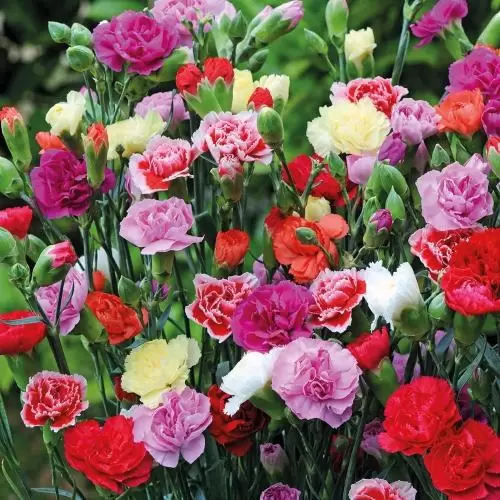
Chabot Carnation plants thrive in full sunlight. They require at least 6-8 hours of direct sunlight per day to grow properly. Place them in a location where they can receive ample sunshine, such as a south-facing window or outdoors in a sunny spot.
Temperature
Chabot Carnation plants prefer cool to moderate temperatures. The ideal temperature range for their growth is between 60°F (15°C) and 70°F (21°C). Avoid exposing the plants to extreme heat or cold, as it can cause stress and hinder their growth.
Soil
The soil should be well-draining and fertile to support the growth of Chabot Carnation. A loamy soil with good organic matter content is ideal. Before planting, amend the soil with compost or well-rotted manure to improve its fertility and drainage.
Watering
Proper watering is crucial for the health and growth of Chabot Carnation. Water the plants regularly, keeping the soil consistently moist but not soggy. Avoid overwatering, as it can lead to root rot. Allow the top inch of soil to dry out slightly between waterings.
Fertilization
Chabot Carnation plants benefit from regular feeding to promote healthy growth and abundant flowering. Apply a balanced, water-soluble fertilizer every two weeks during the growing season. Follow the instructions on the fertilizer package for the correct dosage.
Pruning
To encourage bushier growth and more blooms, it is recommended to prune Chabot Carnation plants. Pinch off the spent flowers regularly to promote new growth and prolong the blooming period. Additionally, pinch off the tips of the stems to promote branching.
Pest and Disease Control
Chabot Carnation plants are prone to certain pests and diseases, such as aphids, spider mites, and powdery mildew. Regularly inspect the plants for any signs of infestation or disease. If detected, treat them using appropriate organic or chemical control methods.
By providing the optimal conditions of sunlight, temperature, soil, watering, fertilization, pruning, and pest control, you can ensure the healthy and successful growth of your Chabot Carnation plants. Enjoy the beauty and fragrance of these lovely flowers in your garden or indoor space!
Step-by-Step Guide to Planting Chabot Carnation Seeds
If you’re looking to add some vibrant colors and fragrant blooms to your garden, planting Chabot Carnation seeds is a great option. Here is a step-by-step guide on how to plant Chabot Carnation seeds:
1. Selecting the Right Time
The best time to plant Chabot Carnation seeds is in the spring, after the danger of frost has passed. Carnations thrive in cooler temperatures, so planting them in early spring will give them ample time to establish themselves before the hot summer months.
2. Choosing the Right Location
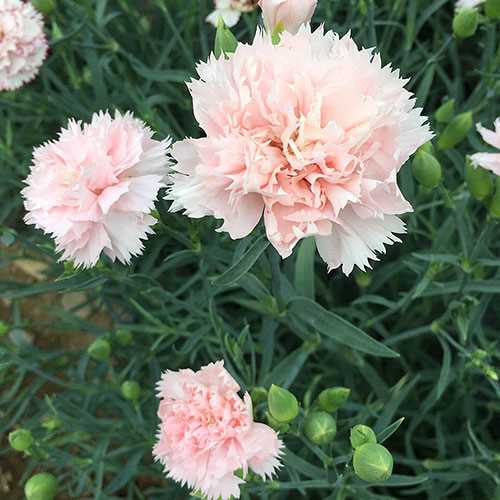
Chabot Carnations prefer full sun or light shade. Choose a location in your garden that receives at least 6 hours of direct sunlight per day. Ensure the soil is well-draining and fertile to provide the best growing conditions for your Carnations.
3. Preparing the Soil
Before planting the seeds, prepare the soil by removing any weeds or debris. Loosen the soil with a garden fork or tiller and add organic matter such as compost or well-rotted manure. Mix it well with the existing soil to improve drainage and overall soil quality.
4. Sowing the Seeds
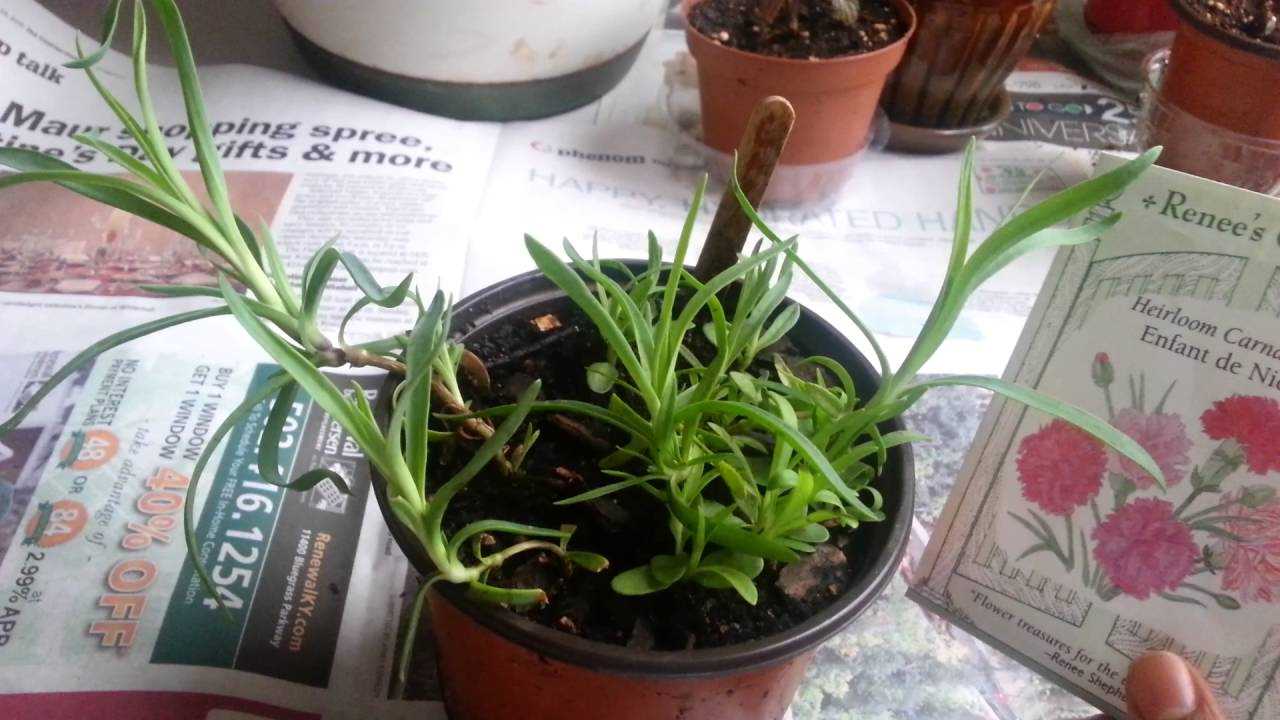
Begin by sprinkling the Chabot Carnation seeds over the prepared soil. Space the seeds about 6 inches apart to give them room to grow. Lightly press the seeds into the soil, ensuring they are in good contact with the soil for proper germination.
5. Watering
After sowing the seeds, water the soil gently but thoroughly. Ensure the soil remains consistently moist but not waterlogged throughout the germination and growing process. Avoid overwatering, as it can lead to rot or fungal diseases.
6. Germination
Chabot Carnation seeds typically germinate within 1-3 weeks. During this period, ensure the soil remains moist and provide temperature conditions between 65-75°F (18-24°C). Once the seedlings emerge, thin them out to maintain a spacing of about 12 inches between each plant.
7. Transplanting
When the Chabot Carnation seedlings have grown to a sturdy height of around 4-6 inches, they can be transplanted into their permanent garden location. Carefully dig a hole slightly larger than the root ball of each seedling and place them in, ensuring they are at the same depth as they were in their containers.
8. Caring for the Plants
Water the transplanted seedlings immediately after planting, and continue to water them regularly, especially during dry spells. Mulching the soil around the plants can help retain moisture and keep weeds at bay. Provide support, such as stakes or cages, as the plants grow taller to prevent them from flopping over.
9. Fertilizing
Apply a balanced, slow-release fertilizer about 4-6 weeks after transplanting to promote healthy growth and abundant flowering. Follow the manufacturer’s instructions for the appropriate dosage and application method.
10. Pruning and Deadheading
To encourage more blooms and maintain a tidy appearance, prune the Chabot Carnation plants regularly. Remove any dead or faded flowers by cutting them back to a new set of leaves. This will redirect the plant’s energy into producing new blooms.
11. Overwintering
In colder climates, Chabot Carnations may need protection from frost. Consider applying a layer of mulch around the base of the plants in late fall to insulate the roots. You can also cover the plants with a frost cloth or move potted Carnations indoors.
By following these step-by-step instructions, you can successfully plant and care for Chabot Carnation seeds, enjoying their beautiful flowers and sweet fragrance in your garden.
Watering and Fertilizing Chabot Carnation Plants
Proper watering and fertilizing are essential for the healthy growth of Chabot Carnation plants. These plants require regular watering and an appropriate fertilization regimen to thrive and produce beautiful flowers. Here are some guidelines to help you with watering and fertilizing your Chabot Carnations:
Watering
- Chabot Carnations prefer moist, well-drained soil. It is important to water them regularly to keep the soil moist but not waterlogged.
- Water your Chabot Carnations deeply once or twice a week, depending on the weather conditions. During hot and dry periods, you may need to water more frequently.
- Avoid overwatering, as it can lead to root rot and other fungal diseases. Make sure the soil has proper drainage to prevent waterlogging.
- Water your Chabot Carnations at the base of the plant, avoiding wetting the foliage. Wet foliage can increase the risk of diseases such as powdery mildew.
Fertilizing
- Chabot Carnations benefit from regular fertilization to promote healthy growth and abundant flowering. Use a balanced, slow-release fertilizer specifically formulated for flowering plants.
- Apply the fertilizer according to the instructions on the package. Generally, it is recommended to fertilize Chabot Carnations once every 4-6 weeks during the growing season.
- Avoid over-fertilizing, as it can lead to excessive foliage growth and fewer flowers. Follow the recommended dosage to prevent nutrient burn and other issues.
- Consider using organic fertilizers, such as compost or well-rotted manure, to nourish your Chabot Carnations naturally. These organic materials enrich the soil and provide a slow-release source of nutrients.
- Apply the fertilizer around the base of the plant, avoiding direct contact with the foliage. Water the plants after fertilizing to help the nutrients reach the root zone.
By following these watering and fertilizing guidelines, you can ensure the healthy growth and abundant blooming of your Chabot Carnation plants. Remember to monitor the moisture level of the soil and adjust your watering schedule accordingly. With proper care, your Chabot Carnations will reward you with stunning flowers and a delightful fragrance.
Common Pests and Diseases of Chabot Carnation
Chabot Carnations are generally quite resistant to pests and diseases, but like any plant, they can still be affected by a few common issues. Being aware of these problems and taking prompt action can help ensure the health and beauty of your Chabot Carnation plants.
Pests
- Aphids: These small, soft-bodied insects can cluster on the stems and foliage of Chabot Carnations, sucking sap and causing distorted growth. Regularly inspect your plants and use insecticidal soap or neem oil to control aphids.
- Spider Mites: These tiny pests are hard to spot but can cause yellowing leaves and webbing on the plant. Introduce beneficial insects like ladybugs or use a miticide if spider mites are present.
- Thrips: Thrips feed on Chabot Carnation flower buds, causing them to become discolored and distorted. Use sticky traps or neem oil to control thrips.
- Slugs and Snails: These pests can chew holes in the leaves of Chabot Carnations, especially in damp conditions. Remove any hiding places, such as debris, and use beer traps or copper barriers to deter them.
Diseases
- Botrytis Blight: This fungal disease can make Chabot Carnation flowers turn brown and mushy. Avoid overhead watering, improve air circulation, and remove infected plant parts to prevent the spread of this disease.
- Fusarium Wilt: Fusarium wilt causes wilting, yellowing, and stunting of Chabot Carnation plants. There is no cure for this fungal disease, so it is best to remove and destroy infected plants to prevent further spread.
- Powdery Mildew: Powdery mildew appears as a white powdery coating on the leaves of Chabot Carnations. Improve air circulation, avoid overhead watering, and use fungicides to control and prevent powdery mildew.
- Root Rot: Overwatering and poorly draining soil can lead to root rot in Chabot Carnations. Ensure the plants are in well-draining soil and only water when the top inch of soil is dry to the touch.
Regular monitoring, proper cultivation practices, and early intervention can help prevent and manage common pests and diseases of Chabot Carnations. By providing the right growing conditions and addressing any issues promptly, you can help your Chabot Carnations thrive and enjoy their beautiful blooms.
Pruning and Deadheading Chabot Carnation
Pruning and deadheading Chabot Carnations is essential for promoting healthy growth and prolonging the flowering period of the plant. By removing spent flowers and pruning back the foliage, you can encourage the development of new blooms and prevent the plant from becoming overgrown.
Deadheading
Deadheading is the process of removing spent flowers from the plant. This not only improves the overall appearance of the Chabot Carnation but also prevents the plant from wasting energy on producing seeds. To deadhead a Chabot Carnation, simply pinch or snip off the faded flower heads at their base, taking care not to damage the rest of the plant.
Regular deadheading will encourage the plant to produce more flowers and extend the blooming period. It is recommended to deadhead the Chabot Carnation once the majority of its blooms have started to fade.
Pruning
Pruning Chabot Carnations is usually done in early spring to remove any dead, damaged, or diseased foliage. This not only improves the plant’s appearance but also allows for better air circulation and helps prevent the spread of diseases.
Using a pair of clean, sharp pruning shears, start by cutting back any dead or brown foliage at its base. Then, remove any diseased or damaged stems, making sure to cut back to healthy tissue. Be sure to disinfect your pruning tools between cuts to prevent the spread of any pathogens.
If your Chabot Carnation becomes overgrown or leggy, you can also prune it back to promote bushier growth. Cut back one-third of the plant’s overall height, making the cut just above a set of healthy leaves or nodes. This will encourage new growth and help maintain a compact and tidy plant.
Conclusion
Pruning and deadheading Chabot Carnations is a simple yet important task in maintaining the health and appearance of the plant. By regularly removing spent flowers and pruning back the foliage, you can help the plant produce more blooms and keep it looking its best throughout the growing season.
Tips for Extending the Blooming Season of Chabot Carnation
Chabot Carnations, with their vibrant colors and sweet fragrances, are a delightful addition to any garden. To make the most out of this beautiful flowering plant, here are some tips for extending its blooming season:
1. Provide Adequate Sunshine
Chabot Carnations thrive in full sun. Make sure to plant them in an area where they will receive at least 6 hours of direct sunlight each day. This will help promote healthy growth and abundant blooms.
2. Water Regularly
While Chabot Carnations are relatively drought-tolerant, they still require regular watering, especially during dry periods. Aim to keep the soil consistently moist but not waterlogged. Mulching around the plants can help retain moisture and regulate temperature.
3. Deadhead Spent Flowers
To encourage continuous blooming, remove faded flowers by deadheading. This process involves cutting off the spent flower heads just above a set of healthy leaves or stem. Deadheading redirects the plant’s energy towards producing new blooms rather than seed production.
4. Fertilize Regularly
Keep your Chabot Carnations well-fed with a balanced fertilizer. Apply a slow-release granular fertilizer in early spring and again in midsummer to provide a steady supply of nutrients for continuous flower production.
5. Prune and Divide
Pruning is essential to maintain the shape and health of Chabot Carnations. After the blooming season is over, cut back the plants to about half their height. Dividing the clumps every 2-3 years can also rejuvenate the plants and promote more vigorous growth.
6. Keep an Eye on Pests and Diseases

Regularly inspect your Chabot Carnations for signs of pests or diseases, such as aphids or powdery mildew. If any issues are detected, take appropriate measures to control and treat the problem promptly to prevent it from spreading and affecting the flowering ability of the plants.
7. Consider Growing in Containers
If you have limited garden space or want more control over the growing conditions, consider planting Chabot Carnations in containers. This allows you to move them around to take advantage of the best sunlight and protect them from extreme weather conditions.
8. Provide Winter Protection
In colder climates, Chabot Carnations may require some winter protection. Mulching around the base of the plants can help insulate the roots from freezing temperatures. You can also consider covering the plants with a frost cloth or bringing potted specimens indoors during the coldest months.
By following these tips, you can help extend the blooming season of your Chabot Carnations and enjoy their beauty for a longer period. Remember to provide proper care and maintenance, and your Chabot Carnations will reward you with a breathtaking display of flowers.
Harvesting and Preserving Chabot Carnation Flowers
The Chabot carnation flowers can be harvested once they have reached their full bloom and the petals are fully open. It is best to harvest the flowers in the morning when the blooms are at their freshest and have not been subjected to the heat of the day.
Harvesting the flowers:
- Use a pair of sharp scissors or pruning shears to cut the stem of the carnation flower.
- Make a clean cut, angling the blade at a 45-degree angle to the stem.
- Leave at least 6-8 inches of the stem attached to the flower.
- Avoid cutting too close to the base of the plant, as this can damage the surrounding foliage.
Preserving the flowers:
Properly preserving Chabot carnation flowers can extend their vase life and allow you to enjoy their beauty for longer. Here are some methods you can use to preserve the flowers:
Water vase method:
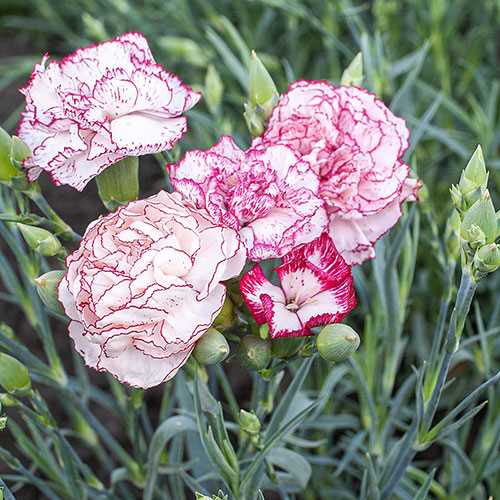
- Fill a vase with fresh water and add floral preservatives or a homemade preservative solution.
- Remove any excess foliage from the lower part of the stems.
- Place the cut carnation flowers in the vase, making sure the stems are fully submerged in the water.
- Change the water every 2-3 days and recut the stems at an angle to ensure water absorption.
Drying method:
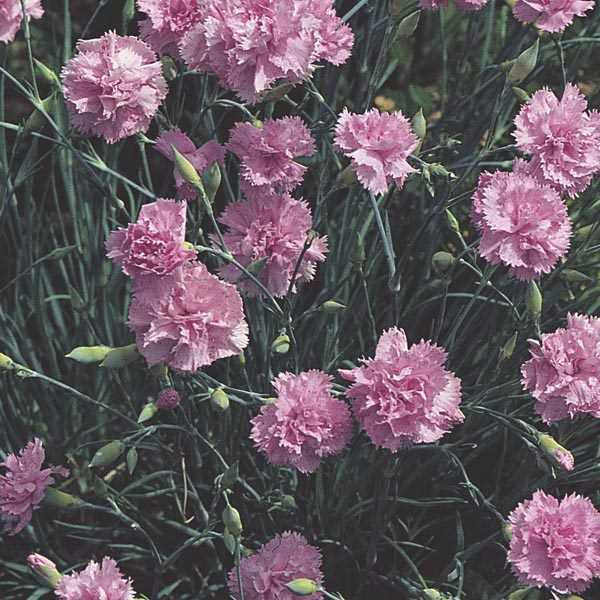
- Gather a small bunch of carnation flowers and secure the stems together with a rubber band or string.
- Hang the bunch upside down in a cool, dark, and well-ventilated area.
- Leave the flowers to dry for 2-3 weeks or until they are completely dry to the touch.
- Once dry, you can remove the rubber band or string and use the dried carnation flowers for various crafts or decorations.
Note: It’s important to handle the Chabot carnation flowers with care during the harvesting and preserving process to avoid damaging the delicate petals and stems. Regularly inspect the flowers for signs of wilting or decay and remove any affected flowers promptly to prevent the spread of disease.
Questions and Answers:
How long does it take for Chabot Carnation seeds to germinate?
Chabot Carnation seeds usually take about 7 to 14 days to germinate.
What is the ideal time to plant Chabot Carnation seeds?
The ideal time to plant Chabot Carnation seeds is in early spring, after the danger of frost has passed.
Can Chabot Carnations be grown in containers?
Yes, Chabot Carnations can be grown in containers. Choose a container that is at least 8 inches deep and has drainage holes.
What kind of soil do Chabot Carnations prefer?
Chabot Carnations prefer well-draining soil with a pH between 6 and 7.5. Adding organic matter, such as compost, can help improve the soil’s fertility and drainage.
Do Chabot Carnations require a lot of sunlight?
Yes, Chabot Carnations require full sunlight to thrive. They should receive at least 6 hours of direct sunlight per day.
How often should I water Chabot Carnations?
Chabot Carnations should be watered deeply but infrequently. Water them when the top inch of soil feels dry, and make sure not to overwater, as it can lead to root rot.







